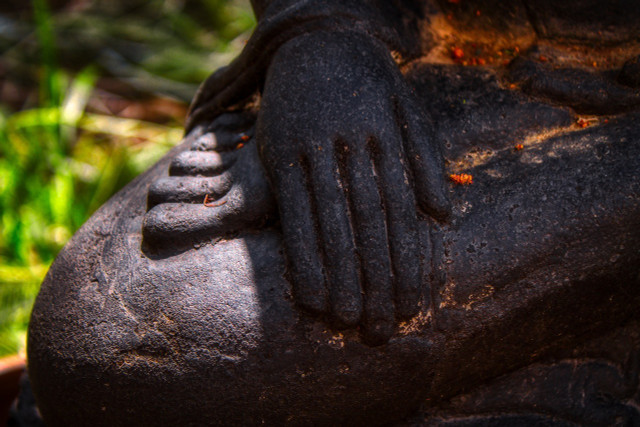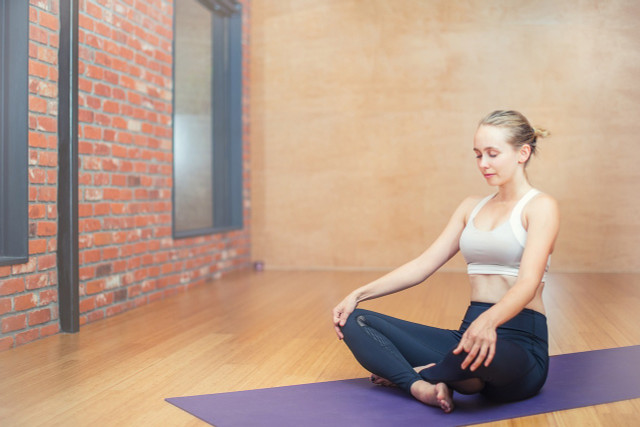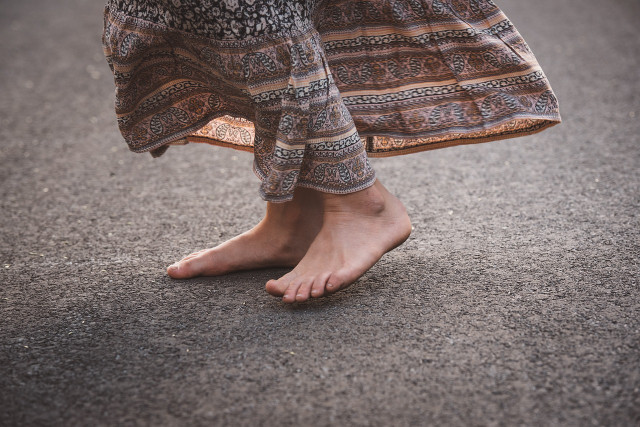
If your feet fall asleep while meditating, it’s uncomfortable. In addition, the tingling can quickly distract us from practice. In this article you will learn how to continue meditating despite your feet falling asleep.
When you meditate while sitting, your feet may fall asleep. The tingling and numb feeling then usually draw attention away from breathing and inner peace. Instead, the uncomfortable feeling is consuming and becomes the main focus of the meditation.
However, feet that have fallen asleep are not a reason to break off your meditation. There are some things you can do to keep your meditation practice going. Here we tell you what options you have.
Tip: Also read our article on the right meditation seat. With the right sitting position, you can prevent feet from falling asleep.
Why do feet fall asleep?

(Photo: CC0 / Pixabay / PatrizioYoga)
If your feet fall asleep during meditation, don’t worry. Tingling in the foot, while uncomfortable, is not dangerous or harmful to your body.
A common assumption is that our body parts fall asleep because the blood flow is cut off. However, that is not entirely true. The Apotheken-Umschau explains that legs, feet or arms fall asleep when a nerve is pinched under pressure. Then the supply of nutrients and oxygen is interrupted. This disrupts communication with the brain and information cannot be passed on properly.
Some nerve fibers then send a signal to our brain to release the pressure as quickly as possible. We perceive this signal as a tingling sensation. After a while, along with the tingling, there is also a numb feeling.
If the pressure is released in time, a pinched nerve will not harm the body. So you don’t have to worry that your sleeping foot will suffer damage from the meditation.
Continue meditating despite tingling in the foot

(Photo: CC0 / Pixabay / truthseeker08)
So, knowing that a dead foot is not dangerous, you can continue your meditation with peace of mind. Relax and stay calm inside.
Of course, that is not so easy with a tingling in the foot. One option is to accept the physical challenge and simply remain in the position you have been in. This is how you practice self-control and acceptance. Don’t identify with the stimulus. Notice it, but keep bringing your focus back to your breath.
The more you relax into the discomfort, the less it will consume you. Practice letting go and see this challenge as a learning opportunity.
Change your sitting position

(Photo: CC0 / Pixabay / lograstudio)
If meditating with numb feet becomes too uncomfortable, then there is nothing wrong with changing your sitting position. Once you relieve the pressure on the pinched nerve, the numbness will subside. An intense tingling sensation follows, which, however, passes after a short time. Then your feet will feel normal again and you can continue meditating undisturbed.
Here’s how you can adjust your position and relieve stress:
- Let the ankles rotate.
- Change from the lotus position to an open cross-legged position.
- Change from cross-legged to a kneeling seated position.
- Straighten your legs for a few moments.
Even while moving, you can continue to focus on your meditation practice. Keep your focus on the breath and relax into the new pose. It is a good practice not to let external circumstances and changes interrupt your meditation.
Alternative to sitting: Practice walking meditation

(Photo: CC0 / Pixabay / Pezibear)
If your feet regularly fall asleep while meditating while sitting, try a different form of meditation. Walking meditation is a relaxing alternative to sitting still. You direct your attention completely to walking. It is best to meditate barefoot.
How to practice walking meditation:
- Focus on your breath and relax your shoulders, arms and legs. Find a moment of stillness.
- Put one foot in front of the other.
- Walk upright and very slowly.
- Become aware of how you put your foot down, roll off and flex your toes.
- Feel your body weight shift with the movement.
- Be aware of ground contact.
- Slow down your pace more and more. Finally, come still to end the meditation.
Tip: If walking meditation doesn’t appeal to you, you can alternatively meditate on a chair or lying down. So the nerves of the feet are not strained.
After the meditation: relieve your feet

(Photo: CC0 / Pixabay / yogabelloso)
After a meditation with feet that have fallen asleep, they naturally want to be revived. After meditation, there are a few things you can do to wake up your limbs:
- Stretch out your legs.
- Gently massage your feet.
- Let your ankles spin.
- Get up carefully. This allows blood to flow faster to the pinched nerve. If necessary, hold on to something if your foot gets too tingly and gives way.
- Take a few steps to revitalize the feet.
Tip Stretch your legs and feet regularly to relieve nerves. With simple exercises or a yoga for beginners routine, you can loosen your muscles and later relax in cross-legged meditation.
Read more on Techzle.com:
- Singing Bowl Meditation: Procedure and How to Enjoy It
- Three recommended meditation apps – with results from Stiftung Warentest
- Learning mindfulness: Definition and 5 exercises for everyday life